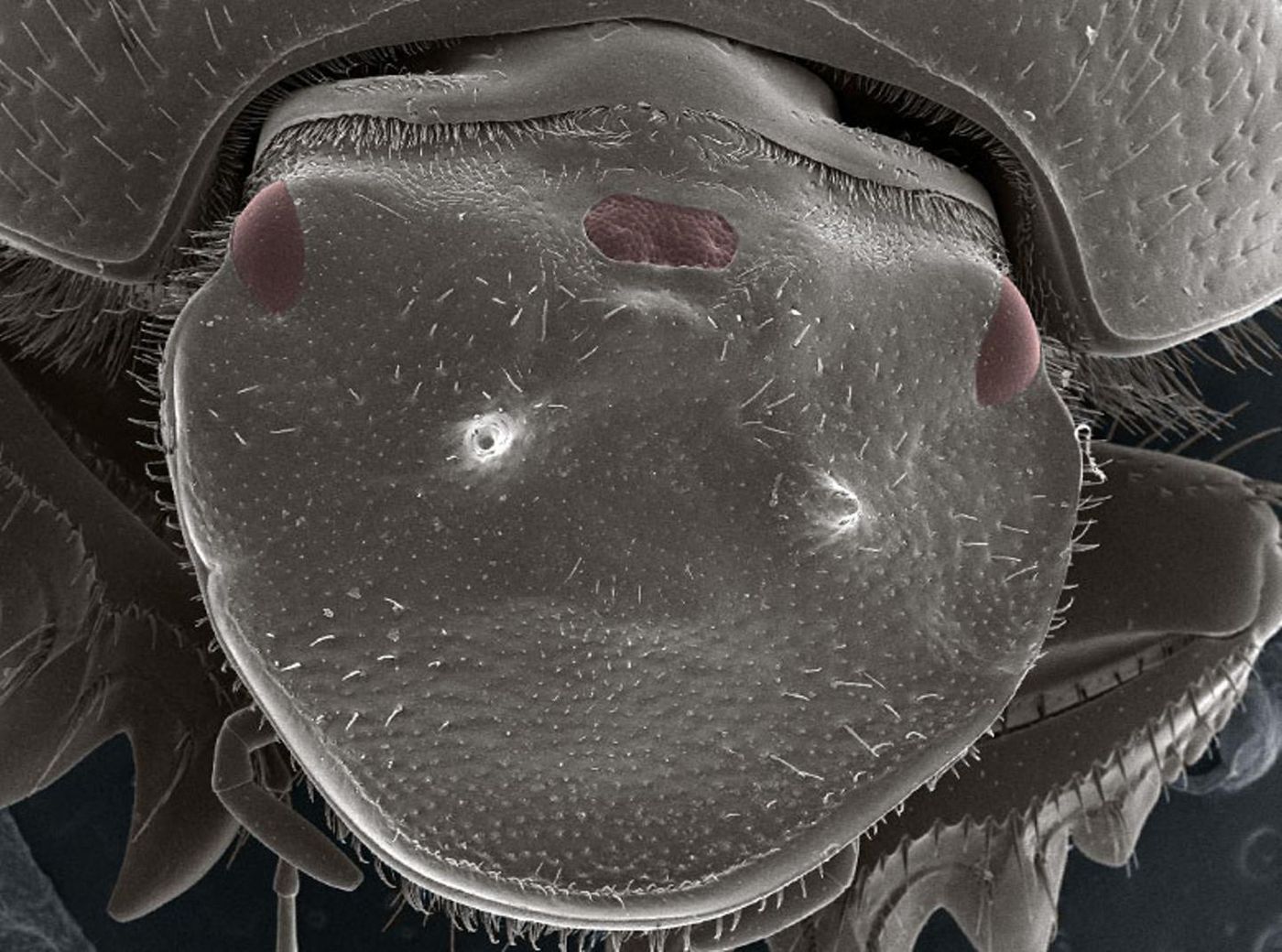Simple Genetic Changes Create Three Eyed Beetle
Organisms start out as a bunch of cells, and when it comes to the development of those cells into an animal, many mysteries remain. Researchers seeking to learn more about the intricate underlying processes used a simple genetic change to create a beetle with a fully functional third eye in the center of its forehead. The work, reported in the Proceedings of the National Academy of Sciences (PNAS), aims to reveal more about how evolution uses the tools it has at hand to create novel traits, or, put existing traits in new places. This study has also provided valuable insight into earlier experiments that accidentally yielded a beetle with an extra eye; that investigation was looking at the development of the insect head.
"Developmental biology is beautifully complex in part because there's no single gene for an eye, a brain, a butterfly's wing or a turtle's shell," said Armin P. Moczek, a Professor in the Department of Biology at IU Bloomington College of Arts and Sciences. "Instead, thousands of individual genes and dozens of developmental processes come together to enable the formation of each of these traits. We've also learned that evolving a novel physical trait is much like building a novel structure out of Legos, by re-using and recombining 'old' genes and developmental processes within new contexts."
New traits do not seem to require a huge number of genetic alterations, as was once thought. Moczel noted, however, that unknown mechanisms produce new characteristics in some situations, but not others. "You can make new things over and over or in new places using the same old set of 'bricks,'" he explained. "But in Legos, we know the rules of assembly: which pieces go together and which things don't. In biology, we still struggle to understand the respective counterparts."
Organs that grow in the wrong place can reveal more about what works together and what won’t. These so-called ectopic organs have been put on fruit flies by activating major regulatory genes where they are not activated normally. When fruit fly eyes grew in the wrong place, however, they were not functional like those on the new beetle.
The alteration of only one gene was necessary to make this functional eye, which surprised the scientists. It is "a remarkable example of the ability of developmental systems to channel massive perturbations toward orderly and functional outcomes," Moczek said.
The orthodenticle or odt gene was deactivated by the researchers to make the beetle, who knew that the gene had a role in head formation. "This study experimentally disrupts the function of a single, major gene," Moczek explained. "And, in response to this disruption, the remainder of head development reorganizes itself to produce a highly complex trait in a new place: a compound eye in the middle of the head. Moreover, the darn thing actually works!"
The scientists performed several tests to be sure the third eye was otherwise normal. It was made of the same types of cells, which expressed the same genes, had the right connections to nerves and behaved as the other eyes. Relatively simple genetic tools used for the gene knockdown makes this work exciting, said IU postdoctoral researcher Eduardo E. Zattara, the lead author of the study.
Moczek said their conclusions will help address important questions about evolution, development, and medicine. For example, an understanding of the organization of complex organs and how they are integrated into the body are central challenges that the medical sciences must address to create artificial organs for transplantation and research.
"The use of ectopic eyes is a highly accessible paradigm to study all of this, across many types of organisms. We regard this study as really opening the door to new avenues of investigation in multiple disciplines," Zattara said.
Sources: AAAS/Eurekalert! Via Indiana University, PNAS









